LAMM ML2.2
0% – 3 Year Financing Available!
LAMM ML2.2 Single-ended Vacuum Tube Power Amplifier
The ML2.2 single-ended power amplifier is a proud successor in a line of the ML2 series (the original ML2 and its replacement, ML2.1) and represents a new generation of single-ended power amplifiers with regulated power supply employing a unique high current low impedance power vacuum tube triodes 6C33C in both output stage and power supply. Implementation of these triodes allowed to create an output transformer with a very low turns ratio and, as a consequence, extended (as compared even to the most advanced modern vacuum tube amplifiers) frequency decade factor, as well as dramatically reduced leakage inductance. Chosen by the Design and Engineering Committee to receive the Innovations Award at the International Consumer Electronics Show in Las Vegas as the most innovative product of the year in the “specialty audio” category, the ML2 was a first single-ended amplifier on the market capable of reproducing a full range of audio frequencies and recreating the original spectral balance and harmonic structure of the recorded material with almost 100% accuracy. The designer’s unique vision and nuanced grasp of audio electronics has created an amplifier capable of capturing the essence of your favorite music like never before.
Product Description
0% – 3 Year Financing Available!
LAMM ML2.2 Single-ended Vacuum Tube Power Amplifier
NOTE TO ML2/ML2.1/ML2.2 OWNERS:
We strongly recommend that you have a high quality digital voltmeter on hand in order to properly adjust and control the parameters of the amps. We use and recommend FLUKE model 87-V. Using a cheap voltmeter is likely to give you the wrong reading of the parameters, which will result in improper adjustment, and, in the end, malfunction of the amp.
NOTE:
ML2 and ML2.1 are not upgradable to ML2.2NOTE: We recommend replacing 6N6P tubes about once every two years
The ML2.2 single-ended power amplifier is a proud successor in a line of the ML2 series (the original ML2 and its replacement, ML2.1) and represents a new generation of single-ended power amplifiers with regulated power supply employing a unique high current low impedance power vacuum tube triodes 6C33C in both output stage and power supply. Implementation of these triodes allowed to create an output transformer with a very low turns ratio and, as a consequence, extended (as compared even to the most advanced modern vacuum tube amplifiers) frequency decade factor, as well as dramatically reduced leakage inductance. Chosen by the Design and Engineering Committee to receive the Innovations Award at the International Consumer Electronics Show in Las Vegas as the most innovative product of the year in the “specialty audio” category, the ML2 was a first single-ended amplifier on the market capable of reproducing a full range of audio frequencies and recreating the original spectral balance and harmonic structure of the recorded material with almost 100% accuracy. The designer’s unique vision and nuanced grasp of audio electronics has created an amplifier capable of capturing the essence of your favorite music like never before.
The ML2.2 proudly continues this tradition. Whereas both – the ML2 and the ML2.1 – were completed products perfectly capable of functioning to the full of their potential without upgrades or modifications, it became the designer’s drive to expand the limits of this topology and introduce some features of the ML3 Signature into the ML2.1 design.
The sonic result is a most seamless fusion of the ML2.1 and ML3 Signature that leaves the listener totally immersed in the music performance as well as pleasantly surprised at the palpable breathing presence of the music material. The ML2.2 is an amplifier that sonically is much closer to the ML3 Signature while pricewise is closer to the ML2.1. The meticulous build quality, high quality of parts and materials along with innovative topology make the ML2.2 a truly prized possession of any music lover.
The output stage with its high-current voltage regulator section grows out of that in the ML2.1 and implements certain changes that relate specifically to the use of most recently introduced parts of higher quality.
In contrast to the output stage, the input stage has been totally redesigned and is based on that of the ML3 Signature amplifier. This innovative front-end topology was incorporated because of specific characteristics of the output tube. It brought about a dramatic step forward in sound quality while keeping the cost within the price category of the ML2.1.
Single-ended tube amplification has the greatest potential of reproducing music with maximum fidelity to live sound. Because of several inherent limitations of the format, most SE tube amplifiers recreate a beautiful midrange but shortchange the low and upper frequencies. The ML2.2 overcomes these limiting factors to reproduce the thrilling sound of live music.
The ML2.2 along with the ML3 Signature are the only single-ended tube amplifiers that reproduce the entire spectrum in the audio frequency range. A midrange to die for supports a superbly natural and extended bass along with exquisite upper frequencies. The amplifier’s innovative circuitry allows one to hear the original spectral balance and harmonic structure of the recorded material without loosing the smallest of detail and nuance.
Another unmatched feature of the ML2.2 is the breathtaking, transparent, three-dimensional soundstage it throws seemingly without boundaries or limitations. The ML2.2 brings you a very natural and engaging sound.
Advanced technical solutions are used in the design of the ML2.2. Custom-made output transformer of very high quality and unique front-end and output stages, plus the sophisticated power supply, free the ML2.2 to drive most real-world-load speakers yielding effortlessly dynamic sound.
In a nutshell, the ML2.2 features the following upgrades and modifications as compared to the ML2.1:
- New power transformer
- Input stage totally redesigned and based on that of the ML3 Signature amplifier.
- Five filter chokes (compared to two in the ML2.1)
- Plate fuse holder located on top of the amplifier’s chassis for greater customer convenience
- Utilization of a much higher quality pc-board, and parts and materials that have become available in recent years
- Introduction of an option to turn the amp on/off remotely
Each ML2.2 is handcrafted of the finest materials and top quality parts like military-grade DALE metal-film resistors, PRC wire-wound resistors, CADDOCK power-film resistors, BOURNS multi-turn potentiometers, CORNELL DUBILIER and UNITED CHEMI-CON electrolytic capacitors, ELECTROCUBE and ROEDERSTEIN film capacitors, HAMMOND chokes, gold-plated NEUTRIC connectors, gold-plated binding posts, and military-grade low-noise long-life vacuum tubes.
The power and output transformers have no mechanical contact with either the transformer cover or the chassis; they’re suspended in a special encapsulant material that almost completely absorbs residual mechanical vibrations. This feature plays a significant role in assuring the unique clarity and micro resolution during sound reproduction.
Two multi-turn trimming potentiometers accessible through special openings in the amplifier’s chassis, along with two sets of test points, allow the user to adjust and measure the nominal value of plate voltage and plate current of the output tube by using an external voltmeter.
In conceiving and executing the overall design of the ML2.2, the goal was to utilize modern technology and processes while recreating a look reminiscent of the long-gone vacuum tube era.
The ML2.2 functions on around-the-world AC line voltages (100/120/220/230/240 V).
U.S. Patent pending.
Here is what the prominent audio critics have said about the ML2.2
…[The ML2.2’s] bass is acutely aligned with the rest of the sonic spectrum: exacting in terms of dynamic shifts and pitch definition, and able to impart the expressive texture of instruments throughout its range. …And the amps were able to achieve all of this while dealing with the large woofers of Wilson MAXX 3s — and were never short of the power needed to push quick-paced, dynamically challenging fare…
…In the mids, there is no highlighting, even as the region reminds us again why SET amps are prized. Roundness — the sense that images are not flat and lacking in dimension — and density are in full redolence, giving voices especially a sense of immediacy that’s not a function of transient speed, for instance, but rather the extreme physicality of the presentation. The ML2.2s are physical, which is all the more noteworthy because of their dozen and a half watts of power. Along with this, however, is vitality — a vast amount of musical information that is the sign of another intricate balance this amp achieves: between sheer resolving power and standard-setting naturalness. The ML2.2s are certainly detailed amps, but they achieve this with grace, not ruthlessness. Analog was especially impressive… Playing some of the 45rpm sets coming from Chad Kassem’s new record-pressing plant…was an act of near-constant revelation…
…There are many ways to sum up the Lamm ML2.2s. They represent more than a worthy upgrade to the ML2 and ML2.1; they can drive speakers that would choke other SET designs; they offer a nearly unique collection of traits, including realistic tone and balance, copious weight and dimension; they have rather un-SET-like bass.
What makes them most memorable to me, and I suspect to you if you get to audition them, is that they quickly override the part of the brain that cooks up these thoughts to begin with. You may sit down to listen to the amps, but in short order you’ll realize that you’re actually listening to the music, so quickly do they make you forget about them. ..it’s [probably] the highest goal of hi-fi — to transcend the equipment, what the ML2.2s do as a matter of course.
Marc Mickelson, TheAudioBeat.com (January, 2012)
FROM THE EDITOR
…This essay is neither a renunciation of all amplifiers other than SETs nor an evangelical campaign for the world to embrace the single-ended triode amplifier. They are limited in the loudspeakers they can drive, exhibit other practical drawbacks, and are certainly not for every listener. Moreover, only a very few of them are uncolored enough to be used as a reference. But when I listen to music through a pair of Lamm ML2.2s, I can’t help but question whether nearly a century of conventional wisdom about what makes an amplifier “good” has led us down the wrong path.
Robert Harley, The Absolute Sound (June, 2012)
…The highest praise I can give the Lamm ML2.2 is that it doesn’t sound like a single-ended-triode amplifier. …the ML2.2 is far more than just another low-powered SET. In fact, it is singular in its ability to deliver SET virtues while minimizing their limitations.
…The ML2.2 is solidly built but decidedly utilitarian in appearance. This is a serious piece of audio engineering, not living-room jewelry.
…For starters, the ML2.2 has an absolutely luscious rendering of tone color, yet it never crosses the line into a syrupy romanticism that would soon grow tiresome. The amplifier lacks the typical SET signature of an overly warm and ripe midband that directs the musical focus to certain instruments. And then there’s the bass, the Achilles’ Heel of SET. The ML2.2’s bottom-end extension, control, dynamics, and articulation wouldn’t be mistaken for a solid-state dreadnought design, but neither would you think that this 18W SET could deliver the kind of bass control and dynamic drive it exhibited driving the Magico Q7.
The ML2.2 is so natural, organic, and musically right — and so greatly minimizes an SET’s traditional shortcomings — that the amplifier caused me to question the modern paradign of high-powered solid-state amplification…
…The ML2.2 sounds like whatever the source sounds like, with no common editorial signature from recording to recording.
What makes the ML2.2 different from other amplifiers — tubed or solid-state, single-ended or push-pull — is a sense of palpable realism and the feeling that music is being brought to life contemporaneously. The ML2.2 doesn’t sound like just a great tubed amplifier, only a little better; it provides a fundamentally different listening experience. This amplifier’s sound is qualitatively superior, not quantitatively. As I discussed in my review last issue of the Q7, realism is the ultimate goal of high-end audio, and therefore the ultimate reference standard for judging audio products. And realism is what the ML2.2 delivers, in spades.
…The ML2.2 is utterly natural, organic, and free from any hint of electronic haze. Significantly, the ML2.2 liquidity and ease aren’t the result of softening the treble, slightly reducing resolution or rounding transient information. In fact, this amplifier has a full measure of treble energy, is ultra-high in resolution, and has whip-fast transient performance. The difference is that the ML2.2 doesn’t make the treble sound as though it’s a separate component of the spectrum. Neither does it artificially hype detail or add etch to transient leading edges. It simply presents music in a way that sounds closer to the way live instruments sound, and less like a hi-fi recreation of them.
Another of the ML2.2’s strengths is its ability to make crystal-clear subtle musical lines that, through other amplifiers, become part of a homogenized background. The ML2.2 allowed me to hear, without effort, what every musician is doing at any time. Countless times I found myself discovering nuances of expression in “background” parts that turned out to be essential to the piece’s presentation. This quality is in part aided by another of the ML2.2’s great attributes, the impression that the instrument exists in tangible space, not in a freeze-dried vacuum. I could hear a halo of air around the image, and that halo expand outward with its dynamic envelope, a quality for which Jonathan Valin coined the term “action.” Not only that, but the ML2.2 portrayed the reverberations around the instrument with a density and complexity that one hears in life …When these qualities are combined simultaneously as they are in the ML2.2, the result is an extremely powerful connection with the musical expression.
…The Lamm ML2.2 surely belongs in the pantheon of the world’s greatest amplifiers — of any price or technology. This amplifier delivers the kind of special listening experience that you must hear for yourself to understand just how special it is — and how it can make other amplifiers, even the most highly regarded tube and solid-state designs, sound somewhat flat and sterile by comparison.
…Once you hear the ML2.2 under the right conditions, your world will be forever changed. I know that mine has been.
Robert Harley, The Absolute Sound (February, 2013)
LISTENING
Interestingly, while the reproduction of spatial effects on stereo recordings isn’t high on my list of priorities, the ML2.2s’ imaging prowess was among the first things I noticed. In that regard, these newest Lamms embodied the single-ended ideal: they floated solo instruments and voices between the speakers with the sort of psychedelic presence that seems the sole province of that output architecture. Spatially and in many other ways, the Lamms were engaging from the start.
More important, those sounds were musically convincing. While the sounds of instruments and voices had believable color, texture, and presence, and appeared to emanate from within a black absence of electronic noise, it was also apparent from the start that the Lamm allowed lines of notes to retain apparently all their natural flow and momentum. Although this might pass for faint praise in another context, the ML2.2 was the most listenable amplifier I’ve experienced.
In my 2004 review of the ML2.1, I described that amplifier’s ability to scrape noise and distortion away from lines of notes, and get closer than ever to the real musical sounds underneath the artifacts. The ML2.2 did that and more: it unearthed music, and musical meanings, I’d simply never heard before.
…The ML2.2 didn’t just respect sonic colors and textures — it revered them, with greater saturation and depth than I recall from its predecessor.
…Vladimir Lamm, whose groundwork in engineering and the perception of sound has occupied him for nearly 50 years — and whose Lamm Industries celebrates its 20th anniversary this year — has created an amp that offers not only unparalleled performance in many regards, but combinations of musical qualities available in no other product I know of. While only the prospective buyer can judge the value of the ML2.2, I suspect that most people with both the means and a thirst for the capabilities described above would have little trouble pulling the trigger.
…the Lamm ML2.2 is a failure in only one regard: it is completely useless for background music. Every note it played in my home became unignorable. An extraordinary product, and one that all of you should endeavor to hear.
ley, Stereophile (A
SPECIFICATIONS
Rated Output Power
minimum continuous sine-wave power,
from 20Hz-20KHz with no more than:0.7% THD (FTC) @ rated line voltage
3% THD (FTC) @ rated line voltage0.7% THD (FTC) @ rated line voltage
3% THD (FTC) @ rated line voltage0.7% THD (FTC) @ rated line voltage
3% THD (FTC) @ rated line voltage
.
.1 Watt into 16 Ohms.
18 Watts into 16 Ohms.1 Watt into 8 Ohms
18 Watts into 8 Ohms.1 Watt into 4 Ohms
18 Watts into 4 Ohms.Rated Output Voltage
with continuous sine waves, from 20Hz-20KHz @ rated line voltage:
- 24 Volts peak into 16 Ohms, corresponding to 36 Watts peak.
- 16.97 Volts peak into 8 Ohms, corresponding to 36 Watts peak.
- 12 Volts peak into 4 Ohms, corresponding to 36 Watts peak.
Rated Output Current
with continuous sine waves, from 20Hz-20KHz @ rated line voltage:
- 1.5 Amps peak into 16 Ohms,corresponding to 36 Watts peak.
- 12 Amps peak into 8 Ohms,corresponding to 36 Watts peak.
- 3 Amps peak into 4 Ohms, corresponding to 36 Watts peak.
Maximum Output Power
with continuous sine-wave power,
at 1 KHz, with no more than 5%
THD (FTC) @ rated line voltage:
- 21 Watts into 16 Ohms.
- 20 Watts into 8 Ohms.
- 20 Watts into 4 Ohms.
Maximum Output Voltage
with continuous sine waves,
at 1KHz, @ rated line voltage:
- 25.92 Volts peak into 16 Ohms, corresponding to 42 Watts peak.
- 17.89 Volts peak into 8 Ohms, corresponding to 40 Watts peak.
- 12.65 Volts peak into 4 Ohms, corresponding to 40 Watts peak.
Maximum Output Current
with continuous sine waves,
at 1KHz, @ rated line voltage:
- 1.62 Amps peak into 16 Ohms, corresponding to 42 Watts peak.
- 2.24 Amps peak into 8 Ohms, corresponding to 40 Watts peak.
- 3.16 Amps peak into 4 Ohms, corresponding to 40 Watts peak.
Small Signal Frequency Response
at 1 Watt into 16 Ohms @ rated line voltage:
(-3dB) 3 Hz, 80 KHz.
Frequency Response
at 18 Watt into 16 Ohms @ rated line voltage:
(-0.3dB) 20 Hz, 20 KHz.
Slew Rate
Vout=48 Volts peak-to-peak of
square-wave signal into 16 Ohms,
F=10KHz @ rated line voltage:
15 Volts per microsecond
Rise Time
Vout=48 Volts peak-to-peak of
square-wave signal into 16 Ohms,
F=10KHz @ rated line voltage:
2.5 microseconds
Noise
Signal/Noise ratio ref. 4 Volts RMS
into 16 Ohms (1 Watt):2 Hz – 22 KHz
A weightedSignal/Noise ratio ref. 16.97 Volts RMS
into 16 Ohms (18 Watts):22 Hz – 22 KHz
A weighted
typically 87 dB.
typically 90 dB.typically 99.5 dB.
typically 102 dB.Voltage Gain
19.97 + 2% or 26 + 0.2dB into 16 Ohms.
14.12 + 2% or 23 + 0.2dB into 8 Ohms.
9.98 + 2% or 19.98 + 0.2dB into 4 Ohms.IM Distortion
(60Hz:7KHz 4:1) SMPTE:
from 1-18 Watts into 16 Ohms
@ rated line voltagefrom 1-18 Watts into 8 Ohms
@ rated line voltagefrom 1-18 Watts into 4 Ohms
@ rated line voltage
no more than 8%
no more than 8%
no more than 8%
Inputs
Pseudo-balanced, non-inverting:Single-ended, non-inverting
3-pin XLR connector.Pin assignment:
pin 1 = signal ground;
pin 2 = non-inverting signal input;
pin 3 = signal ground.gold plated RCA connector (connected in parallel with pin 2, non-inverting input of XLR connector).
ONLY ONE OF THESE INPUTS SHOULD BE CONNECTED TO A PREAMPLIFIER AT THE SAME TIME!
Input Sensitivity
18 Watts into 16, 8, and 4 Ohms
0.85 Volts RMS ± 2%Input Impedance
41 KOhms shunted by 470pF.
Outputs
Three sets of gold plated binding posts for 4-, 8-, and 16-Ohm loads.
Output Impedance
at 1 KHz:
from 30 Hz – 20 KHz:
typically 1.68 Ohms; 16-Ohm tap.
typically 0.84 Ohms; 8-Ohm tap.
typically 0.42 Ohms; 4-Ohm tap.typically 1.68 +0.14 Ohms; 16-Ohm tap.
typically 0.84 +0.07 Ohms; 8-Ohm tap.
typically 0.42 +0.035 Ohms; 4-Ohm tap.Damping Factor
at 1 KHz:from 30 Hz – 20 KHz:
typically 9.5 re: 16-Ohm load.
typically 9.5 re: 8-Ohm load.
typically 9.5 re: 4-Ohm load.typically 9.5 +0.7 re: 16-Ohm load.
typically 9.5 +0.7 re: 8-Ohm load.
typically 9.5 +0.7 re: 4-Ohm load.Operating Temperature
+23 to +104 degrees Fahrenheit
(-5 to +40 degrees Celsius) ambient.Grounding
Grounding (earthing) post and chassis connected to mains earthing.
Power Supply
nominal line voltageInput voltage range
100-240 Volts, 50/60Hz.+10%.Two power transformers, five filter chokes, six separate power supplies, including high current vacuum tube voltage regulator for the output stage.
AC voltage intensively filtered by special RFI power line filter.
Power Supply Energy Storage
Approximately 160 joules.
Front/Rear Panel Controls and
Chassis Connectors & ControlsFront Panel Controls
LED control.
Rear Panel Connectors and Controls
- POWER SWITCH
- AC POWER INLET
- AC MAINS FUSE, along with corresponding fuse holder
- Three sets of gold plated BINDING POSTS
- Two DC POWER JACKS (central pin 2mm dia.) for connecting remote control/link cables
- GROUNDING (EARTHING) POST, gold-plated
Chassis Connectors and Controls
- MULTITURN TRIMMING POTENTIOMETER for setting the nominal value of plate voltage of the output tube
- MULTITURN TRIMMING POTENTIOMETER for setting the nominal value of plate current of the output tube
- Set of testpoints for measuring the value of plate voltage of the output tube by using the external voltmeter
- Set of testpoints for measuring the value of plate current of the output tube by using external voltmeter
- One input RCA connector, gold-plated (located on the left side of the chassis)
- One input XLR connector, gold-plated (located on the left side of the chassis)
Features
AC voltage selector
100/120/220/230/240 Volts, internally switchable.
Ultra low-noise power transformer
Custom-made torodial power transformer has no mechanical contact with either the transformer cover or the chassis, as transformer is suspended in a special encapsulant which almost completely absorbs even the residual mechanical vibrations. This plays a significant role in assuring the absolutely unique clarity and micro-resolution during sound reproduction.
Wide-band output transformer
Custom-made output transformer especially designed for handling high current low impedance output tubes and assuring reproduction of a full spectrum of audio frequencies at any level of output power within its specified range.
Remote control
Power on/off.
Available remote link cable coordinates the remote functions of two or more amplifiers.Safety/Protection
“Soft-start” circuit protects power supply components from large in-rush currents when the amplifier is turned on.Unique delay time and electronic protection circuits secure the delay of approximately 2 minutes in supplying the plate voltage to the output tube, which extends the tube life span and excludes the unpleasant thumps or transients in the system during the amplifier turn on/off.
Thermal resetting fuse controls internal temperature of the power transformer.
Threshold: 248 degrees Fahrenheit
(120 degrees Celcius)Fuses:
4 Amps slo-blo for 100/120 volts;
2 Amps slo-blo for 220/230/240 Volts;
1.25 Amps fast-acting plate fuse for the output tube (V2);
0.125 Amp slo-blo for on/off and remote control circuitry, internally mounted.General
Power Consumption
Typically 245 Watts @ rated output @ 16 (8,4) Ohms.
Burn-in Time at Factory:
Minimum 72 hours.
Recommended Burn-in Time in End-user’s System:
Minimum 200 hours.
Warm-up time:
Minimum 45 minutes.
.
Unit dimensions:
Crate dimensions:8.25 inches (21cm) high x 16 inches (40.64cm) wide x
20.375 inches (51.75cm) deep
[add 1.3125 inches (3.3cm) of depth for handles located on rear panel]26″ x 21″ x 14″ (66.04cm x 53.34cm x 35.56cm)
Unit weight
81 Lb (36.8 Kg).
Shipping weight
107 Lbs (48.6 Kg).
Tube Complement
Amplifier section:
- one 12AX7/ECC83, first amplification stage;
- two 6N6P, second amplification stage;
- one 6C33C-B, output stage.
NOTE: we recommend replacing 6N6P tubes about once every two years to maintain the best performance of the ampVoltage regulation section:
- one 5651, voltage reference tube.
- one 6AK5/5654, voltage regulator tube;
- one 6C33C-B, voltage regulator tube.
Art Dud
)
You must be logged in to post a review.


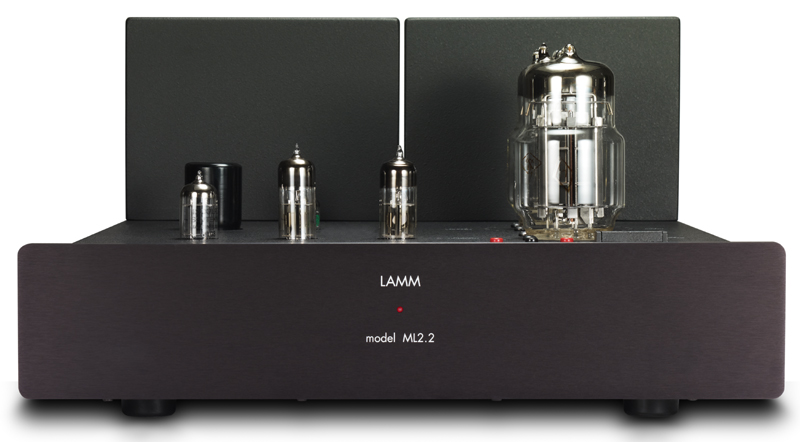
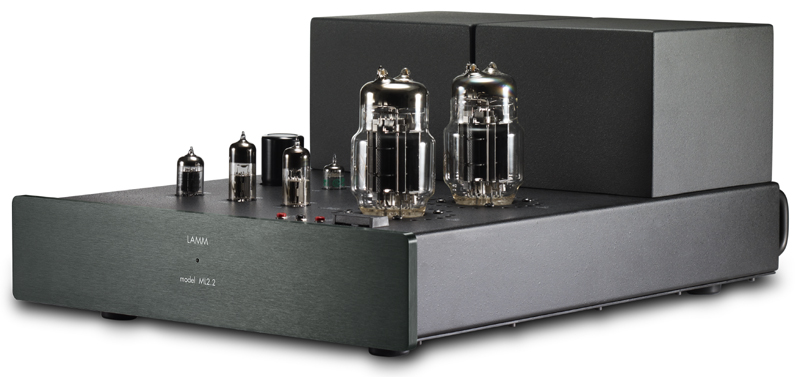
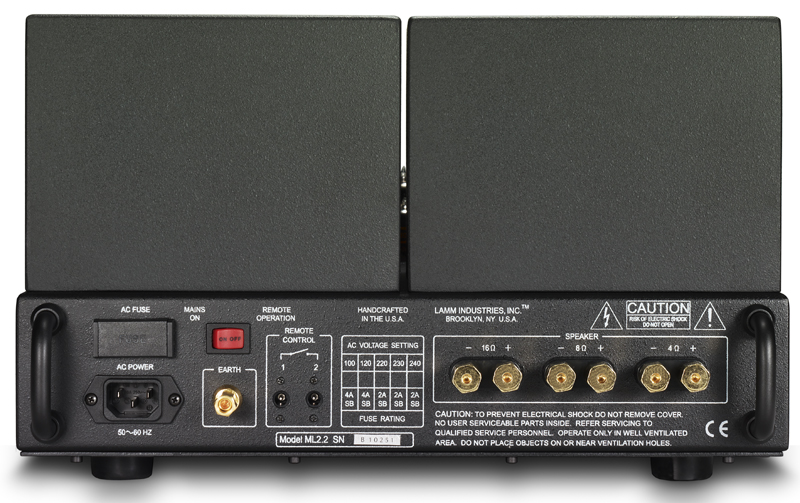
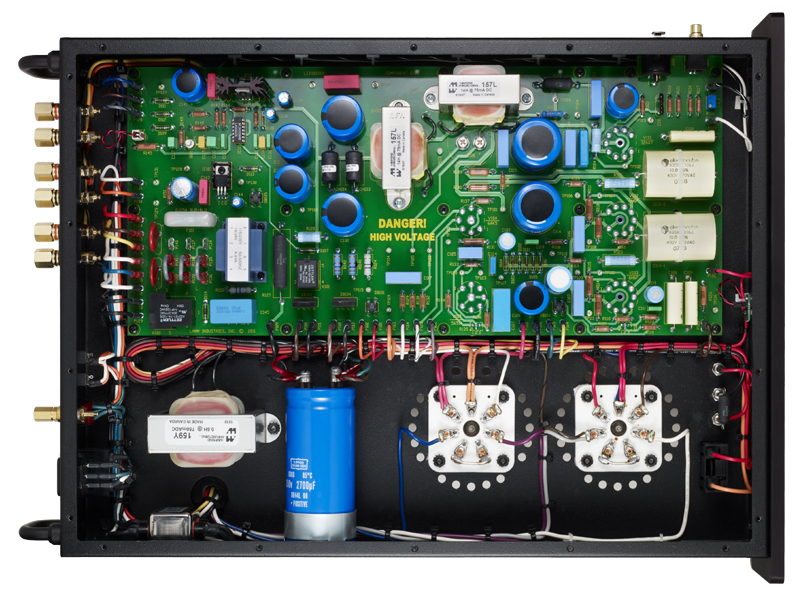
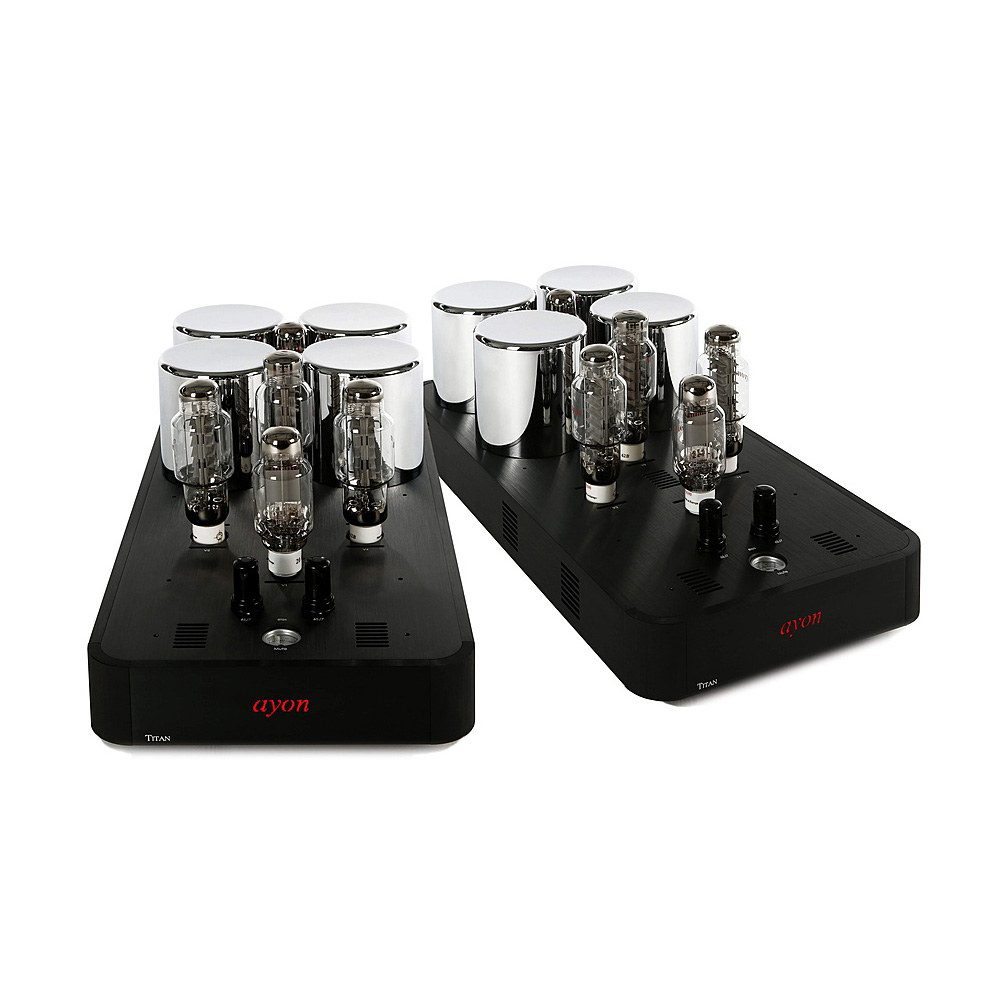
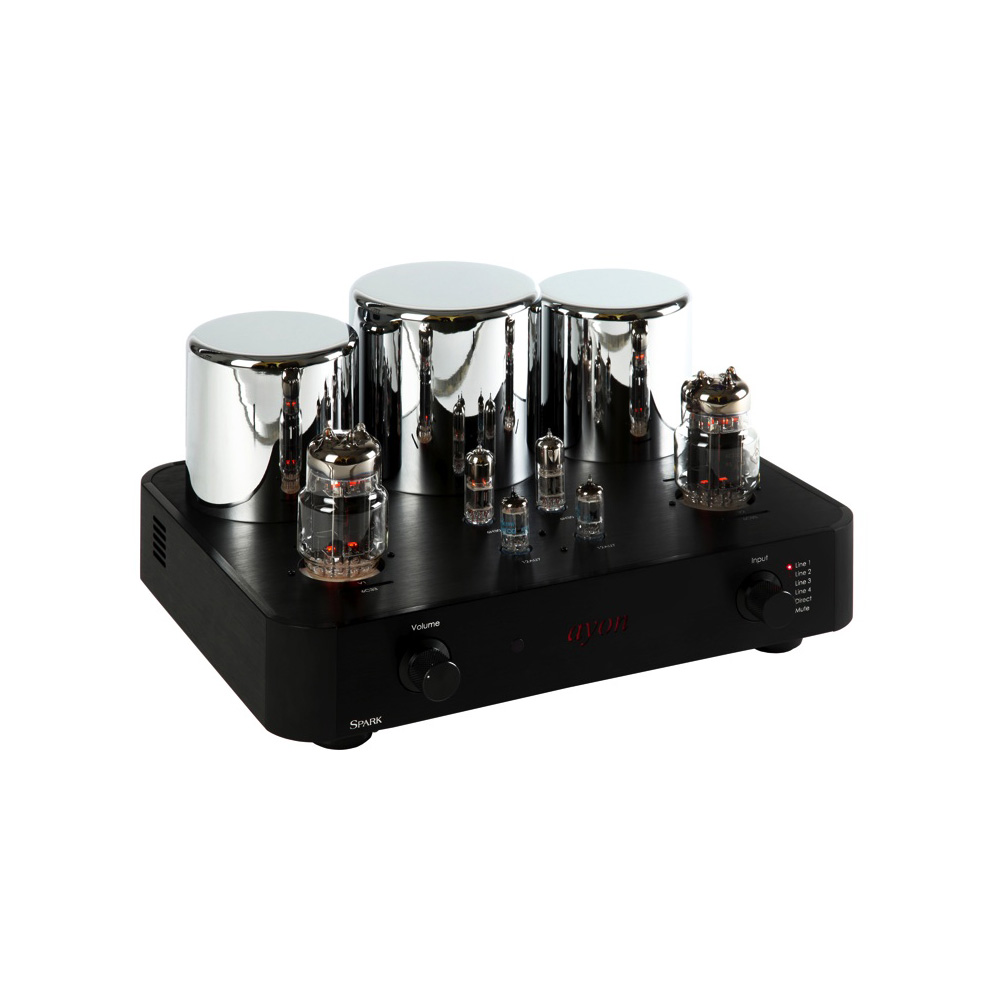
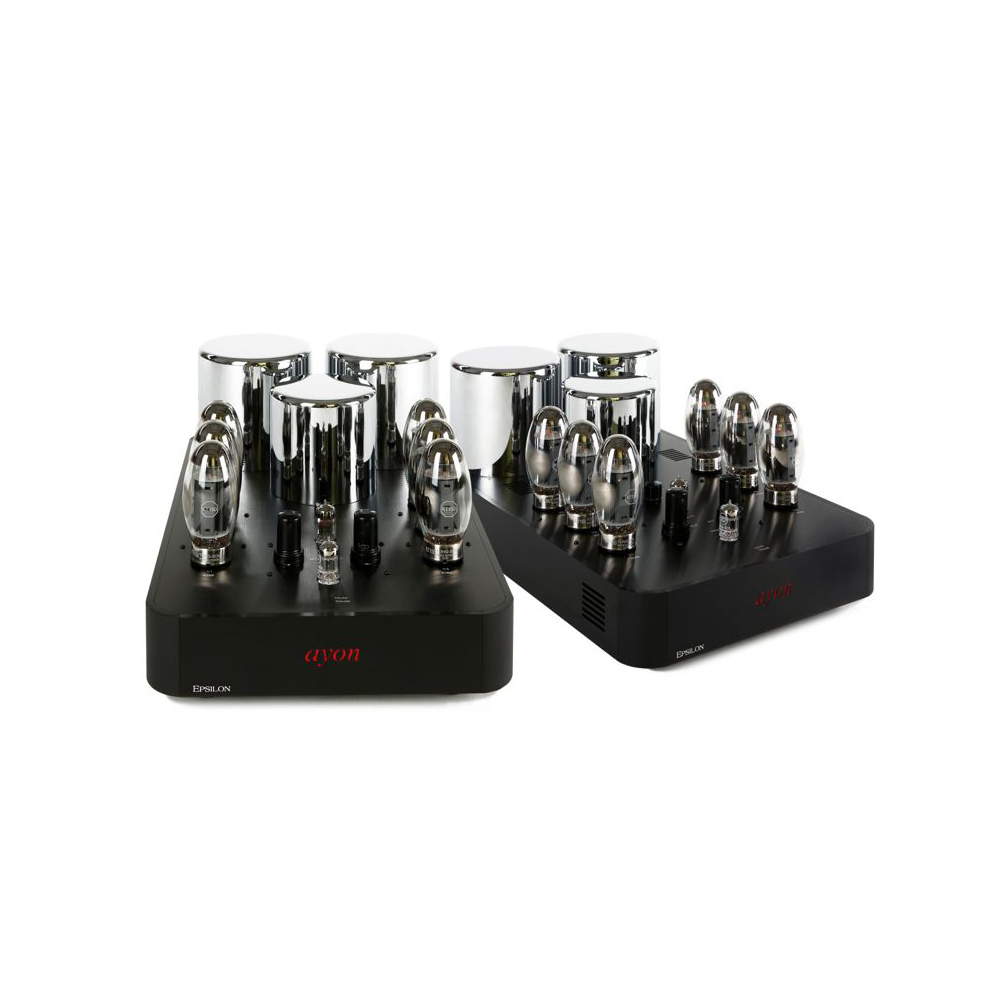
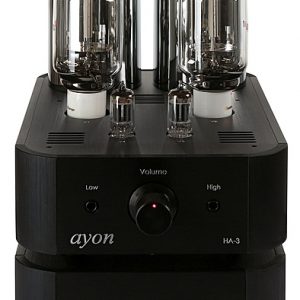
Reviews
There are no reviews yet.